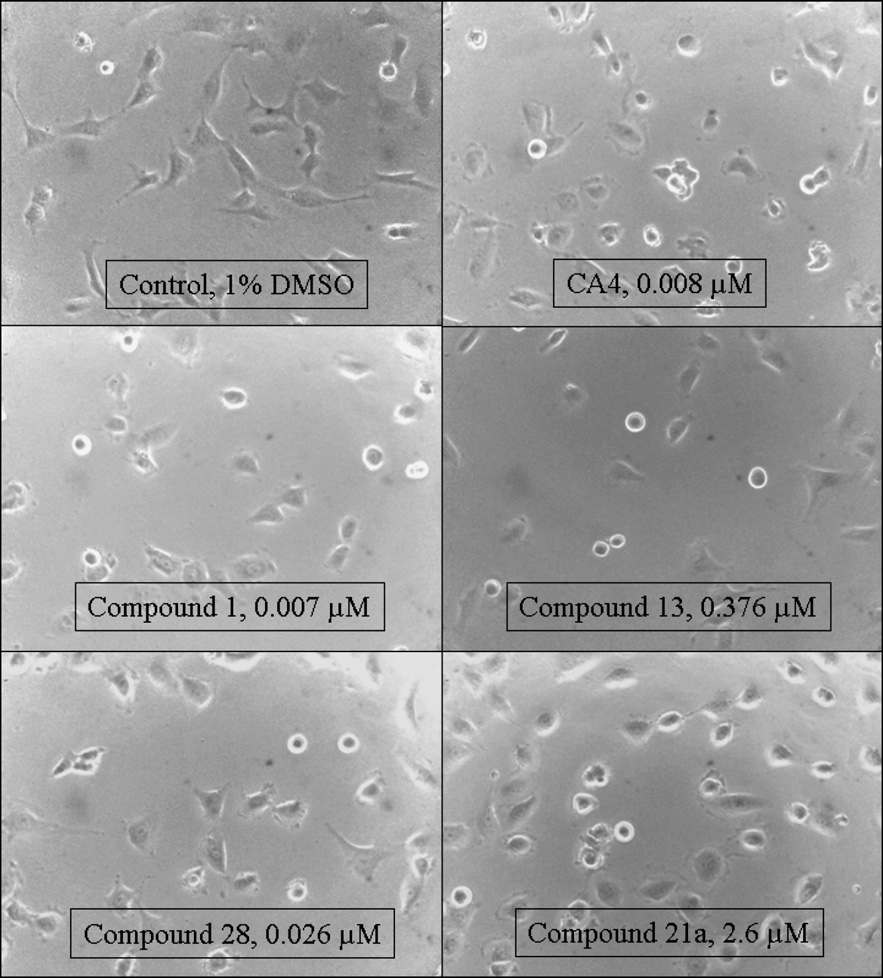Combretastatin A4
CAS number: 117048-59-6
Combretastatin A-4 (CA-4) is a natural anti-cancer agent isolated in 1989 from the African willow tree, Combretum caffrum. A synthetic Combretum caffrum-derived cell-permeable stilbenoid phenol that competes with colchicine tubulin binding and interferes with tubulin polymerization.
Related images

Morphological effects of combretastatin A4 (CA-4) analogues. Endothelial cells (EAhy 926 cells) were exposed to the test compounds and incubated for 2 h at the indicated concentrations. Representative photographs were taken at a magnification of 360ꢂ.
Related Questions and Answers
A: CA-4 exhibited selective cytotoxicity towards cancer cells while sparing normal PBMCs and trophoblast cells. Additionally, it demonstrated antioxidant and antigenotoxic properties in normal cells, suggesting that it could be a promising candidate for cancer therapy with reduced toxicity to healthy tissues. Further in vivo studies are warranted to validate its therapeutic potential.
A: In PBMCs exposed to oxidative stress (induced by H2O2), CA-4 significantly reduced ROS levels in a concentration-dependent manner. This indicates that CA-4 can mitigate oxidative stress in healthy lymphocytes, highlighting its potential protective role against oxidative damage in normal cells.
A: CA-4 demonstrated antigenotoxic effects in PBMCs by reducing DNA damage induced by hydrogen peroxide (H2O2) at concentrations up to 1 μM. This suggests that CA-4 can protect normal cells from oxidative stress-induced DNA damage, contrasting its pro-damaging effects in cancer cells.
A: CA-4 showed cytotoxicity in PBMCs and normal trophoblast cells (HTR-8/SVneo) only at concentrations above 200 μM, while cancer cells (JAR and HeLa) exhibited cytotoxicity at much lower concentrations (100 μM and 1 μM, respectively). This indicates that CA-4 has lower cytotoxicity in human PBMCs compared to cancer cells, suggesting selective toxicity toward tumor cells.
A: CA-4 exerts an antioxidant effect in PBMCs by reducing ROS levels under oxidative stress conditions. This effect was observed at concentrations ranging from 1 to 200 μM, indicating that CA-4 can protect healthy lymphocytes from oxidative damage.